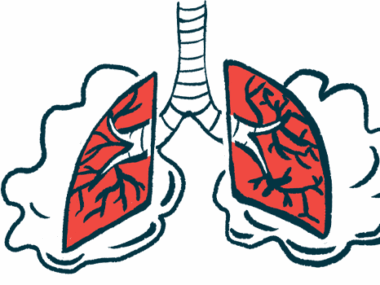Low Bone Density in CF Adults May Be Tied to Inflammation Marker
Written by |

Sergey Nivens/Shutterstock
Poor bone density is increasingly evident in older cystic fibrosis (CF) patients, and may be linked to an inflammation biomarker known as interleukin 8 (IL-8), a small study in Canada suggests.
Bone disorders can affect 24% of adults with CF, the study noted, adding that the Cystic Fibrosis Foundation recommends routine testing of patients’ bone mineral density starting at age 9.
Its findings, however, also indicated that inflammation did not necessarily predict future bone loss, and scientists called for further investigation.
The study, “IL-8 correlates with reduced baseline femoral neck bone mineral density in adults with cystic fibrosis: a single center retrospective study,” was published in the journal Scientific Reports.
CF patients are vulnerable to poorer bone health, specifically lower-than-normal bone mass (osteopenia), and thinner and weaker bones that can break or fracture easily (osteoporosis).
Bone density, a reflection of the mineral content in bone, results from a balance between bone building activity and bone breakdown or resorption. Previous research has indicated that markers of bone mass turnover (bone resorption followed by replacement by new bone) and bone formation are reduced in CF patients relative to people without CF, while a marker of bone resorption — called receptor activator of nuclear factor kappa-Β ligand — is elevated in those with CF.
Inflammation is thought to possibly contribute to osteopenia and osteoporosis. In fact, higher levels of pro-inflammatory molecules, such as IL-6, C-reactive protein, and tumor necrosis factor-alpha have been suggested to correlate with markers of greater bone resorption and lesser bone formation
Researchers in British Columbia and Alberta set up a study to find biomarkers that may be related to CF-related bone disease.
They looked at data from CF patients who were part of a biomarker study between 2012 and 2018. The list of biomarkers included signaling molecules involved in inflammation —IL-8, among others— and a regulator of bone turnover called osteoprotegerin (OPG).
To be included in their study, patients also had to have repeat scans, taken at least two years apart, using dual-energy X-ray absorptiometry (DXA) to measure bone density.
Of the 56 patients included, 37 (66%) were men; 42 (75%) had pancreatic insufficiency, a CF digestive system symptom; 14 (26%) had CF-related diabetes; and 35 (63%) had an infection with Pseudomonas aeruginosa bacteria. Their mean age was 35.6, and their mean ppFEV1 (short for percent predicted forced expiratory volume in one second, a measure of lung function) was 73.7%.
Five patients received a lung transplant after their first DXA scan. As a result, four only contributed baseline (initial) BMD results to the analysis.
Baseline DXA measures found osteopenia in 19 patients (35%), and osteoporosis in 12 (22%).
First, the researchers looked at a potential link between the initial DXA measurements and clinical characteristics. After adjusting for other clinical factors, increasing age and male sex correlated with lesser bone density. Higher BMI (short for body mass index, a measure of body fat based on weight and height) was associated with greater bone density.
Next, the team looked at the relationship between the initial DXA measurements and biomarker levels. After adjusting for multiple factors, higher levels of IL-8 were found to correlate with lower bone density in the left femoral neck, located toward the top of the thigh bone.
When the scientists looked at DXA measurements taken over time, they found that IL-8 correlated with changes in bone density in the hip and femoral neck.
Patients with the highest IL-8 levels had the lowest bone density at the study’s beginning, and the slowest rate of bone loss. In comparison, those with the lowest IL-8 levels had the highest bone density at the study’s start, and the fastest rate of bone loss over time.
This finding was “contrary to expectations,” the researchers wrote, and possibly due to patients with the highest initial IL-8 levels entering the study with a poorer bone mineral density, meaning “the lower rate of change in BMD may have been a result of the ‘floor effect’ as those individuals with the lowest BMD had the least to lose,” relative to the other patient group.
Six (11.5%) patients in that lowest bone density group were also taking a bisphosphonate — a medicine that slows down bone loss — since the beginning of the study. This treatment, the study noted, could have affected their rate of bone loss.
However, when they excluded these six patients from the analysis, they still saw a correlation between IL-8 and changes in bone density in the hip and femoral neck.
Findings suggest that IL-8 “may play an important role in inflammation-related bone disease in CF,” the researchers wrote. However, inflammation “is not likely to be predictive of bone loss over time.”
Because IL-8 blood levels can rise with pulmonary exacerbations and the CFTR protein “dysfunction” that characterizes CF, the researchers also suggested that CFTR modulator treatments “may have a beneficial effect on bone health” by lowering flares and helping the protein to work as it should.
More studies are needed into CF-related bone disease, and possible benefits for bone health with CF modulator use, its researchers concluded.







